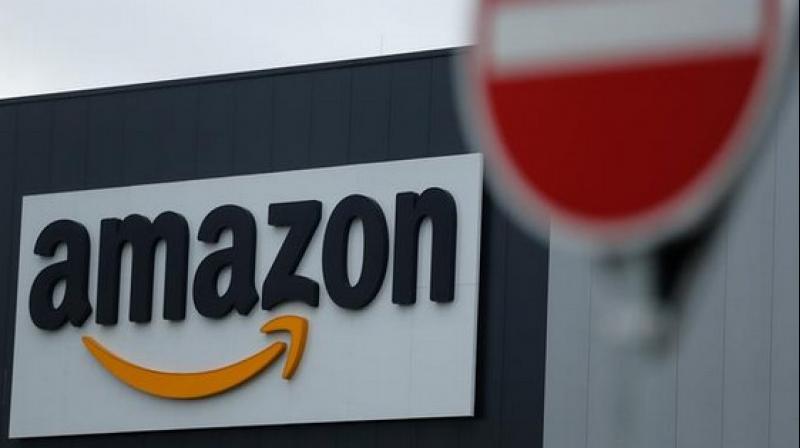Amazon in Hyderabad: Growth lessons for all

During the very week when Ikea, the Swedish furniture giant, started its first anniversary celebrations in Hyderabad, where it had set up its first home in India, came another bit of news — Amazon opened its largest office campus outside the United States in the city.
The two optimistic outliers are in stark contrast to a posse of bleak news in the business pages, threatening to push hard into becoming page one news on a daily basis — indications of a larger economic downturn season being ahead, where automobile manufacturing giants to biscuit-making firms are all laying off employees in thousands, and warning of larger job rationalisations, with more economic experts from across the country predicting bad news rather than good, forcing us to ask a simple question: how can Telangana in general, and Hyderabad in particular, be showcasing signs of a continuing economic boom and growth when India as a whole is slowing down?
When we entered June 2014 as a nation, with the twin emotions of euphoria and hope sweeping and taking grip of most citizens, consequent to an electoral verdict reflecting a tectonic political shift in the Indian political history structure, was Telangana born, a sub-plot of the collapse of the Congress-led UPA and the rise of the BJP 2.0.
A born-again movement for a separate statehood succeeded where its predecessor had failed, leading to the rise of yet another regional force, the TRS led by K. Chandrasekhar Rao, which was faced with a piquant dilemma — of declaring through words and actions, from its earliest days, the political approach the new state would take.
Thought the second major movement for Telangana was non-violent, unlike its violent elder sibling of 1969 where people of Andhra origin were marked and attacked, there were unreported, and overtly unspoken of sentiments in many that creation of a separate Telangana should lead to unleashing a direct street warfare against Andhraites, to kick them away from Hyderbad, to grab their lands and houses, their cars and money; many a malefactor disguised as a crusader lay waiting for a green signal from the new TRS government’s de facto licence to unleash an opportunist war.
Declaring that Telangana was for everyone, and Hyderabad a crucial growth engine to bring transformation elsewhere in the state, the government ensured that Andhra people felt safe, existing businesses never left, and the economic environment was not vitiated by social tensions.
Hyderabad, a city as diverse and composite as India is as a nation, continued to invite and welcome people from everywhere — rural migrants from Telangana, students and job seekers from Andhra, businesses and investors from everywhere in India, and the rest of the world. It was statesmanship from Telangana that it did not make a fatal error in seeking economic growth amidst social tensions, but laid down a strict zero-tolerance for targeting a section of people based on their identity, when needed, at times harshly, turning against the baser impulses of its own party followers, which are now paying rich dividends.
Some sons, like some days, are better than others. Chief minister K. Chandrasekhar Rao left the interface with industry to his son, K.T. Rama Rao, a man who the businesses understood, liked and trusted as he spoke their language, understood their concerns and knew how to get things done.
Openly acknowledging to business and industry their concerns, getting officials and various departments together to address their concerns — potential threats to law and order and business operations by lumpen elements, forced industry holidays due to steep power shortages — Mr Rama Rao could not only convince the existing industry to not waver, but by delivering quick action, ensured they became the informal, and real “word-of-mouth” ambassadors of the new state as an investment destination. Constant informal and quality industry interactions were the core in keeping policies and decision-making industry-friendly.
When a robot brought on to the stage and unveiled a new industrial policy with a single window investment clearance policy, it felt theatrical, a PR ploy for optics. But when Amazon got its clearance within 12 days for its fulfilment centre investment, word spread. More than advertising the Hyderabad model through summits, or media campaigns, an influencer programme was managed by professionals — business folks telling their peers that this was a place to invest, whether a towel manufacturer from Gujarat, a cosmetics firm from West Bengal or a Korean chipmaker.
Political stability, the absence of corruption at the higher levels, a highly motivated batch of bureaucrats with long stints as ancillary factors brought investors consistently backing their intent.
The state made huge investments in transforming the state and city — focussing on core and key needs — water, roads, electric power, public transport, better traffic planning, opening newer packets of land for real estate and keeping the costs of living and doing business low.
When the first Metro Rail actually started chugging in the city, when the Ikea store was opened, when Apple CEO Tim Cook visited, when Boeing started its operations — they were stories narrated as Hyderabad’s success story, not of a government or party; by sharing credit with people, the city created more stakeholders in the success story.
Exploiting an organic spirit of entrepreneurship amongst its cosmopolitan people, Hyderabad evolved into a formidable ecosystem — T-Hub, India’s largest incubator, We-Hub, an incubator for women entrepreneurs, and several other pieces playing a role, completing the jigsaw puzzle.
For several years now, Hyderabad has created icons for the country — in movies, in sports, in businesses. Where achievers are celebrated as heroes, in any walk of life, they breed more of them; a cultural lesson built into the collective psyche.
No city, state or region can remain immune, for long, from a national downturn. But Hyderabad’s success holds several lessons for cities and states across the country.

